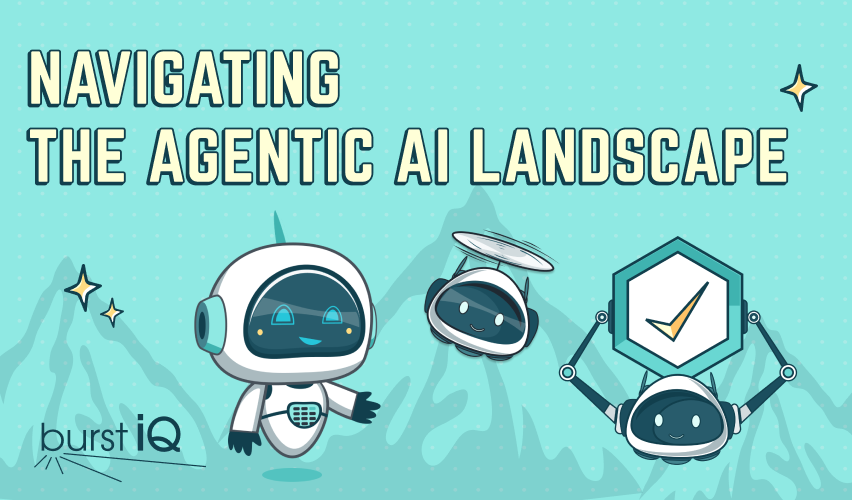PART ONE
Time for Secure Cloud Data
Time for Secure Cloud Data
Introduction
Picture this: you’re sitting in a boardroom, surrounded by your colleagues, discussing the future of your company’s data management strategy and AI strategies. The conversation turns to cloud data solutions, and suddenly, the room is buzzing with excitement. But amidst the chatter, a voice of concern emerges, “What about security?”
In today’s fast-paced, data-driven world, cloud data solutions have become the backbone of businesses and organizations, offering unparalleled scalability, cost efficiency, and accessibility. However, the looming threat of security breaches, data loss, and unauthorized access cannot be ignored.
Picture this: you’re sitting in a boardroom, surrounded by your colleagues, discussing the future of your company’s data management strategy and AI strategies. The conversation turns to cloud data solutions, and suddenly, the room is buzzing with excitement. But amidst the chatter, a voice of concern emerges, “What about security?”
In this Knowledge Burst, we’ll dive deep into the world of cloud data security, exploring the definitions of cloud data lakes and data warehouses, uncovering key vulnerabilities, and examining the recent Snowflake data breach that sent shockwaves through the industry. But we won’t stop there.
We’ll also shed light on the importance of layered security services and introduce you to the game-changing world of privacy-enhanced technologies, spotlighting BurstIQ’s smart data approach.
So, buckle up and get ready to embark on a journey that will transform how you think about cloud data security!
In today’s fast-paced, data-driven world, cloud data solutions have become the backbone of businesses and organizations, offering unparalleled scalability, cost efficiency, and accessibility. However, the looming threat of security breaches, data loss, and unauthorized access cannot be ignored.
In this Knowledge Burst, we’ll dive deep into the world of cloud data security, exploring the definitions of cloud data lakes and data warehouses, uncovering key vulnerabilities, and examining the recent Snowflake data breach that sent shockwaves through the industry. But we won’t stop there.
We’ll also shed light on the importance of layered security services and introduce you to the game-changing world of privacy-enhanced technologies, spotlighting BurstIQ’s smart data approach.
So, buckle up and get ready to embark on a journey that will transform how you think about cloud data security!
Defining Cloud Data Solutions: A Tale of Two Repositories
Defining Cloud Data Solutions:
A Tale of Two Repositories
Before we dive into the nitty-gritty of security, let’s set the stage by understanding the two main characters in our story:
cloud data lakes and data warehouses.

Cloud Data Lake:
The Flexible Powerhouse
Imagine a vast, crystal-clear lake where you can store anything and everything you find valuable. That’s essentially what a cloud data lake is – a centralized repository that allows you to store structured, semi-structured, and unstructured data at any scale. It’s like having a massive digital junk drawer where you can toss in data from various sources and worry about organizing it later.
The beauty of a data lake lies in its flexibility. It can handle diverse data types and complex analytics workloads, making it a go-to choice for businesses looking to unlock insights from their data. Some popular examples of cloud data lakes include Amazon S3 and Azure Data Lake.

Cloud Data Warehouse:
The Library of Congress
Now, picture a meticulously organized library where every book has its place, and finding what you need is a breeze. That’s what a cloud data warehouse brings to the table. It’s a specialized database optimized for storing and querying structured data, using a schema-based approach to keep everything neat and tidy. Data warehouses enable you to perform complex queries, generate reports, and support real-time analytics. Snowflake, Amazon Redshift, and Google BigQuery are some of the prominent players in the cloud data warehouse arena.


Cloud Data Warehouse:
The Library of Congress
Now, picture a meticulously organized library where every book has its place, and finding what you need is a breeze. That’s what a cloud data warehouse brings to the table. It’s a specialized database optimized for storing and querying structured data, using a schema-based approach to keep everything neat and tidy. Data warehouses enable you to perform complex queries, generate reports, and support real-time analytics. Snowflake, Amazon Redshift, and Google BigQuery are some of the prominent players in the cloud data warehouse arena.
Key Security Vulnerabilities:
The Villains Lurking in the Shadows
Key Security Vulnerabilities: The
Villains Lurking in the Shadows
In a previous Knowledge Burst, we took a deeper dive in the role of AI and the escalating cyber war (How AI is Transforming the Escalating Cyber War). I think it is worth revisiting this blog as a refresher on how AI is changing cyber warfare.
In a modern distributed data ecosystem, the world is full of old and new villains. From a data lake and warehouse perspective, most of the traditional methods to secure these environments are focused on building castle walls and fortifying these walls. There is an old saying in the cyber security space, hard and crunchy on the outside, soft and chewy on the inside. Basically, if you crack the perimeter, you own not only the system but the organization’s data jewels as well.
Here are just a few examples of threats to your data ecosystems:









The Invisible Intruders:
Data Breaches & Unauthorized Access
Imagine someone sneaking into your home and rifling through your personal belongings. That’s what a data breach feels like – unauthorized access to your sensitive data. Weak authentication mechanisms and poor access controls are the keys that these intruders use to unlock your digital doors.
The Silent Thieves:
Data Loss & Leakage
Picture a leaky faucet, slowly dripping away your precious water. That’s how data loss and leakage can occur – through improper handling, transfer, or storage of data. These silent thieves can compromise your sensitive information without you even realizing it.
The Wolf in Sheep’s Clothing:
Insider Threats
Sometimes, the biggest threats come from within. Employees or insiders with malicious intent or inadequate security awareness can pose substantial risks to your data security, much like wolves disguised as harmless sheep waiting for the right moment to strike.
The Hidden Trap Door:
Misconfiguration
In your seemingly impenetrable fortress, a hidden trap door awaits. This trap door is a misconfigured cloud environment, a subtle yet perilous security loophole. It enables attackers to breach your defenses and access your valuable data effortlessly.
Weapons of Mass Disclosure:
Cybersecurity Tools
Cybersecurity tools are getting more sophisticated by the minute — especially with the use of AI. What was traditionally the domain of state-sponsored actors, now is readily available to a teenager in a basement.

The Invisible Intruders:
Data Breaches & Unauthorized Access
Imagine someone sneaking into your home and rifling through your personal belongings. That’s what a data breach feels like – unauthorized access to your sensitive data. Weak authentication mechanisms and poor access controls are the keys that these intruders use to unlock your digital doors.

The Silent Thieves:
Data Loss & Leakage
Picture a leaky faucet, slowly dripping away your precious water. That’s how data loss and leakage can occur – through improper handling, transfer, or storage of data. These silent thieves can compromise your sensitive information without you even realizing it.

The Wolf in Sheep’s Clothing:
Insider Threats
Sometimes, the biggest threats come from within. Employees or insiders with malicious intent or inadequate security awareness can pose substantial risks to your data security, much like wolves disguised as harmless sheep waiting for the right moment to strike.

The Hidden Trap Door:
Misconfiguration
In your seemingly impenetrable fortress, a hidden trap door awaits. This trap door is a misconfigured cloud environment, a subtle yet perilous security loophole. It enables attackers to breach your defenses and access your valuable data effortlessly.

Weapons of Mass Disclosure:
Cybersecurity Tools
Cybersecurity tools are getting more sophisticated by the minute — especially with the use of AI. What was traditionally the domain of state-sponsored actors, now is readily available to a teenager in a basement.
Case Study:
The Snowflake Data Breach – A Chilling Tale
According to reports, the breach was carried out by a hacking group known as “ShinyHunters,” who infected an employee’s device with an infostealer and grabbed credentials for accessing Snowflake’s servers. The hackers then used these credentials to sign into a Snowflake employee’s ServiceNow account, bypassing the identity and access management (IAM) and exfiltrating large quantities of customer data from Snowflake’s systems.
The extent of the breach is believed to be significant, impacting a considerable number of Snowflake customers. Reports suggest that over 500 demo environment instances were detected in the stealer logs linked to the compromised Snowflake account. The hackers claimed to have stolen personal data belonging to 560 million Ticketmaster customers and 30 million Santander customers, including names, email addresses, phone numbers, and hashed passwords.
The Snowflake data breach has significantly impacted the affected customers. The stolen data could be used for various malicious purposes, such as phishing attacks, identity theft, and financial fraud. Snowflake customers may also face legal and regulatory consequences, especially if the stolen data includes sensitive information such as personal identification numbers or financial records.
Moreover, the breach has eroded customer trust in Snowflake and other cloud data lake providers and had a significant impact on their market valuation.
SO…
SO…
SO…
How do you protect your organization from any or all of these potential threats?
Check out part two breakdown of the approach every organization needs to consider to protect their data, their reputation, and the privacy of their customers.
Here’s a hint…
Here’s a hint…


About BurstIQ:
BurstIQ’s LifeGraph is an advanced data management platform that enables secure, transparent, and efficient data management for businesses across various industries. By harnessing the power of blockchain technology, BurstIQ empowers organizations to quickly integrate data from any source so they can create a trustworthy business ecosystem. The platform applies knowledge graphs to make data more accessible and to deliver insights that optimize processes, reduce risk, and personalize customer solutions across their ecosystems. With a strong focus on innovation and customer-centricity, BurstIQ continues revolutionizing industries and setting new standards in enterprise blockchain-powered Web3 solutions.









